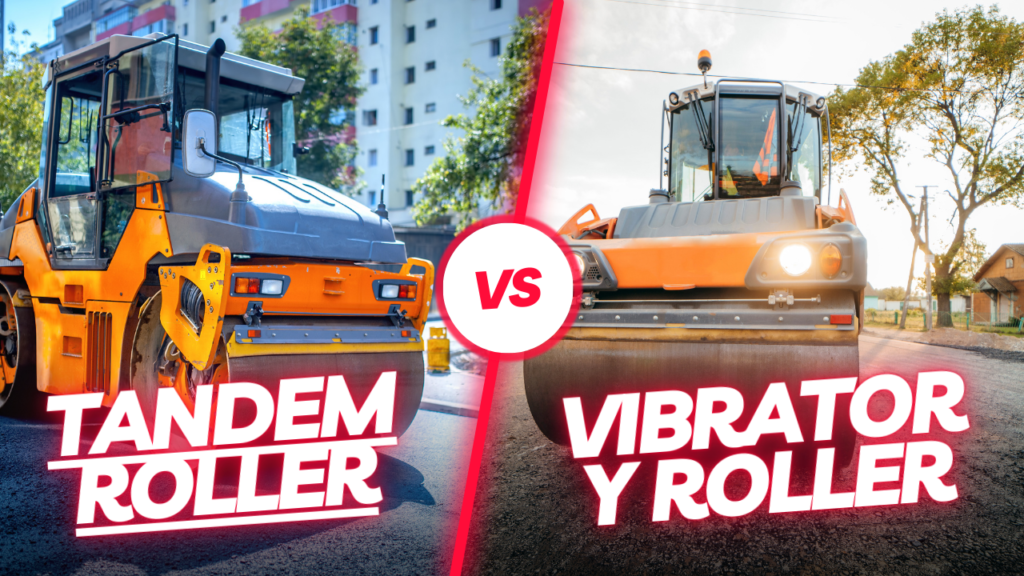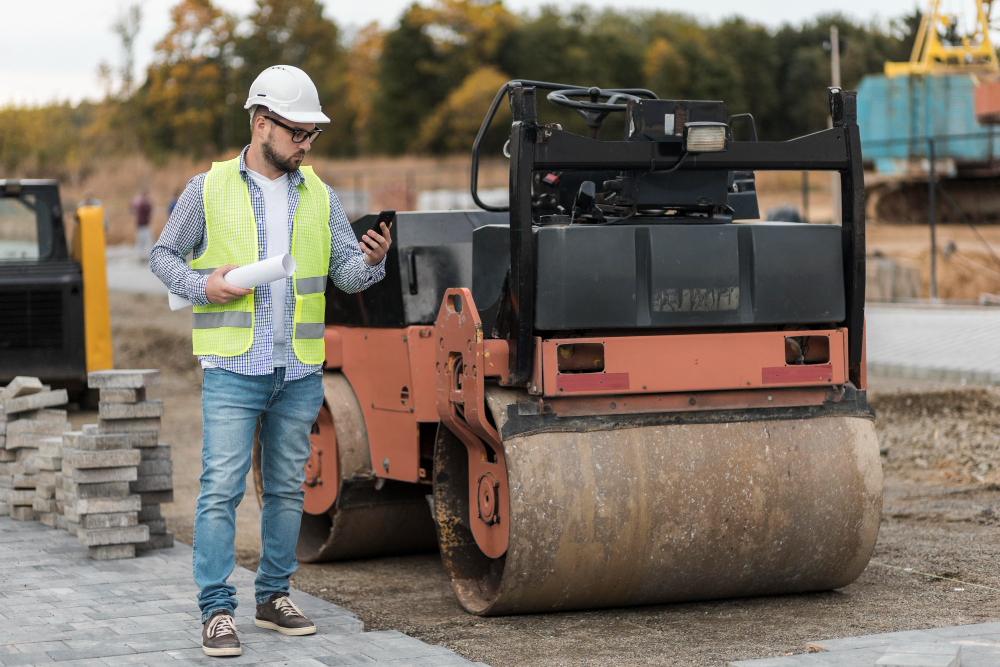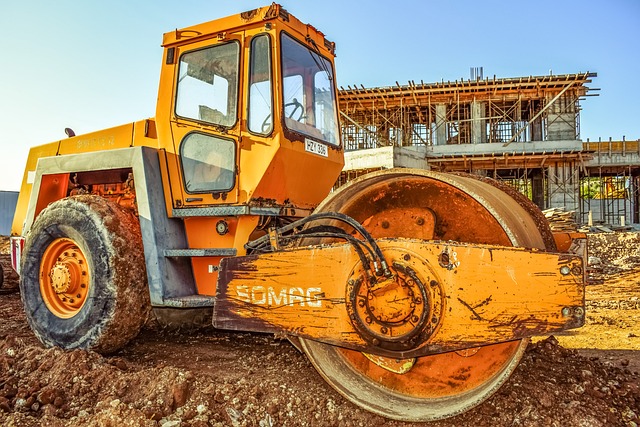Winner of Roller Showdown, Vibratory Roller and Tandem Roller?
Choice of compaction tools may significantly affect the results of building projects. Usually seen are tandem and vibratory rollers. Every variety is unique and fulfills certain purposes.
Vibration enhances asphalt or soil compaction, therefore raising effectiveness and efficiency. Two smooth drums on tandem rollers help to polish asphalt properly.
For construction workers trying to maximize productivity, knowing the differences between a vibratory roller and a tandem roller is very vital. Selecting the correct roller influences budgets, deadlines, and quality of work.
- Making the correct decision may help to reduce rework and increase output.
- Choosing an inappropriate roller might, on the other hand, lead to inefficiencies and higher costs.
- Deeper exploration of the nuances of vibratory and tandem rollers will allow a thorough study to be presented in this piece.
What are Vibratory Rollers?
Ground is compressed in building using vibration rollers. These devices use a dual-drum system including vertically vibrating plates. Vibration arranges asphalt or soil particles so that compaction is improved. Whereas tandem rollers employ static weight and smooth surface finishing, vibratory rollers use vibration to improve compaction.
The main characteristics of vibratory rollers help to explain their compaction effectiveness. To fit materials and projects, one may change amplitude and frequency of vibration. Lower amplitudes are more suited than larger ones in granular soils in cohesive soils. Many current vibratory rollers have sophisticated control systems that allow operators to monitor real-time performance indicators, therefore guaranteeing ideal compaction all through the operation. Meeting project criteria and reducing rework depend on this accuracy.
Vibration rollers fit uses in building. They shine in compaction mixed and granular soil layers as well as in foundation building for various projects on road construction. Their effectiveness shows in deep-compaction groundworks and highway building. Because they provide density for long-term pavement resilience, asphalt paving operations often call for vibratory rollers
What are Tandem Rollers?
Tandem rollers compact dirt and asphalt. Their two cylindrical drums—one in front and one in back— cooperate to compress. The weight and vibratory power of the drums produce continuous surface compaction. For density and smoothness this gadget employs dynamic vibration and static pressure.
Special features of tandem rollers enhance their smoothness. Changing drum weights of these machines lets them be tailored for the job, hence improving compaction efficiency without sacrificing surface integrity. Many tandem rollers use vibrating drums for maneuverability around bends and obstacles. This capacity protects surrounding regions and maintains compaction constant.
Many tasks requiring a perfect finish fit tandem rollers. Road builders make frequent use of them, most especially during asphalt paving when smooth surfaces ensure vehicle performance and safety. These rollers are perfect for urban environments with limited asphalt layer depth and space restrictions as they compress small layers of material very well. For both appearance and utility, roads, parking lots, and airport runways require a perfect polish.
Examine Vibratory against Tandem Performance
Compaction properties help one to evaluate tandem roller performance and vibration. Dual-drum vibratory rollers vibrate vertically because to eccentric weights. This process raises asphalt’s compaction density as well as that of granular soils.
But tandem rollers have two smooth drums with stationary weight free from vibration. Though they compress surfaces well, their density is usually lower than that of vibrating rollers.
Analyzed in roller performance is speed and efficiency driven. On projects, vibratory rollers save time by running faster but compressing properly.
In fewer passes, a vibratory roller can flattening asphalt layers and sublayers, thereby accelerating major highway building. For slower jobs requiring a perfect finish, including parking lot construction or urban road repairs, tandem rollers are preferred. Though they operate slowly, the end effect is a polished surface fulfilling both aesthetic and practical needs.
One cannot stress how roller choice affects project timeframes and results. Higher compaction capacity of vibration rollers speeds up project completion and decreases passes, therefore enabling faster project turnover and reduced labor expenses.
Particularly if they provide great surface quality, tandem rollers may speed project deadlines despite their compaction density restrictions. Project managers have to first understand the differences between a vibratory roller and tandem roller before matching equipment to project criteria in order to obtain best results and timely delivery.
Research on cost-effectiveness
The cost-effectiveness of any kind of roller depends on maintenance issues and long-term running expenses. Though their sophisticated mechanical systems may need more maintenance, vibratory rollers compress effectively.
- Measuring roller cost-effectiveness requires one to incorporate original investment and vibratory and tandem leasing expenses.
- Vibratory roller pricing, can fall between $25,000 to $100,000, depend on size and necessity. Though their price range is same, tandem rollers might be less expensive due of their simpler construction.
- While vibratory roller rentals average $300 to $600 daily, tandem roller rentals are often less expensive; so, short-term projects may gain from savings.
- Depending on use and model, routine upkeep might run you 500 to 1,500 dollars annually. Tandem rollers require less maintenance and have less moving components, hence operators should budget $300–$800. This mismatch might have a major effect on equipment lifetime costs.
Project specifications and use patterns will help one determine the ROI. Vibratory rollers may save labor costs and completion time for projects needing significant groundwork or deep soil compaction, therefore improving ROI even with their initial cost.
Tandem rollers may provide a higher return on surface finishing projects like asphalt paving as they offer smooth surfaces requiring less upkeep. Roller selection therefore depends on a knowledge of project needs.
User perspective and operator opinions
Simplicity and operator learning curve determine vibratory and tandem roller user experience. Complex controls on vibration rollers need training to operate. Workers who want best compaction outcomes have to be aware of frequency and vibration settings.
Because tandem rollers have fewer controls, beginners will find them easier to operate. Less experienced users of equipment who use it with confidence might reduce project timelines and training time.
- User experience assessment mostly revolves around comfort and safety as well. Ergonomic controls and vibration-dampening chairs aid to lower operator tiredness over long usage.
- Although vibratory rollers may have automated shut-off systems under dangerous conditions, both models have roll-over prevention systems (ROPS).
- Tandem rollers’ dual drum construction helps them to run more smoothly, therefore lowering operator jolts and vibrations. This comfort increases production and helps to lower workplace hazards.
Experts in building observe variations between the two roller varieties. Although tandem rollers are ideal for smoothing asphalt or granular surfaces, many operators find vibratory rollers preferred for heavy-duty jobs needing considerable compaction.
In a road, a vibratory roller may be used to break subgrade materials; in a parking lot, a tandem roller would be used to clean the surface. Knowing these preferences may let project managers choose the suitable instruments for their goals and situation.
Sustainability and Environmental Effect
Contractors and project managers give environmental effect of road building equipment first priority. Minizing annoyance to surrounding neighbors depends on controlling noise pollution on urban building sites.
Because of their operating mechanics and vibration processes, vibratory rollers produce more noise than others and might be annoying during peak traffic. Tandem rollers are perfect for projects close to sensitive regions or residential areas as their noise levels are minimal. The lower noise production maintains good relations with society and satisfies regulatory building noise criteria.
- Important distinctions between vibratory and tandem rollers include fuel economy and pollutant level. Vibration rollers employ a single engine for compaction and machine operation, therefore increasing fuel consumption.
- Tandem rollers with a centralized engine and multiple drums might maximize energy use and reduce emissions. Modern tandem rollers may be more ecologically friendly as operators might discover they condense with less gasoline.
Roller technologies support environmentally friendly building. Eco-friendly materials are being included by manufacturers into tandem and vibratory rollers. Combining gasoline engines with electric power sources, hybrid machines lower emissions and increase fuel economy.
Automated systems also enable real-time data-driven performance enhancements, therefore lowering energy waste and increasing sustainability. These initiatives attract environmentally minded consumers and promote moral building practices.
Selecting the Correct Project Action
Selecting the correct roller type for a building project calls for careful thought of many elements. Whether a vibratory or tandem roller is preferable depends on project demands, soil conditions, and intended result.
Compaction needs must be evaluated in relation to materials and ambient factors possibly influencing operation. Tandem rollers are ideal for asphalt finishing; a vibratory roller is better for granular soils as it rapidly provides high-density compaction.
Project needs and equipment capacity evaluations depend on understanding of roller technicalities and work site requirements. Think about the dangers, substance, and compressed area. The way each kind meets project budgets and cost effectiveness will help to justify heavy equipment purchases. Should quick completion be required, a vibratory roller might be quicker than a tandem roller.
Think about some important issues before renting or purchasing. Which project calls for mostly compaction and surface finish? Exist noise or emission rules that might affect the choice of equipment?
Furthermore, taken into account should be operators’ awareness of different roller kinds; a basic machine may save training time and increase productivity. For related projects, interviewing equipment rental businesses might reveal the most recent technologies and their performance.
Finally at last
Understanding the main variations between vibratory and tandem rollers helps one pick building tools. Because of its more compaction capacity, vibration rollers are perfect for heavy-duty and granular materials. High for asphalt and with high surface quality are tandem rollers.
Which rollers to select will depend on project needs like material type, intended finish, and operating efficiency. Based on their projects, building experts should consider the advantages and disadvantages of every kind of roller. Think about operator comfort, long-term maintenance, and initial outlay of funds.
Analyzing these elements will help to produce a conclusion that satisfies project objectives and maximizes effectiveness. Understanding the differences between a tandem and a vibratory roller can help projects to be better and equipment use to be maximized.





